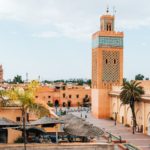Valencia is a charming city in Spain and is one of its most welcoming. The 2,000-year-old city is Spain’s third largest city. Valencia is packed with amazing festivities, rich cultural heritage and also an average of sunshine for 314 days a year. It truly is the perfect holiday destination.
Explore the most romantic sunsets and enjoy the best Paella that you will ever taste!
Get the most out of your upcoming trip with these 17 things to do…
MUST-DO
Saint Nicholas Church
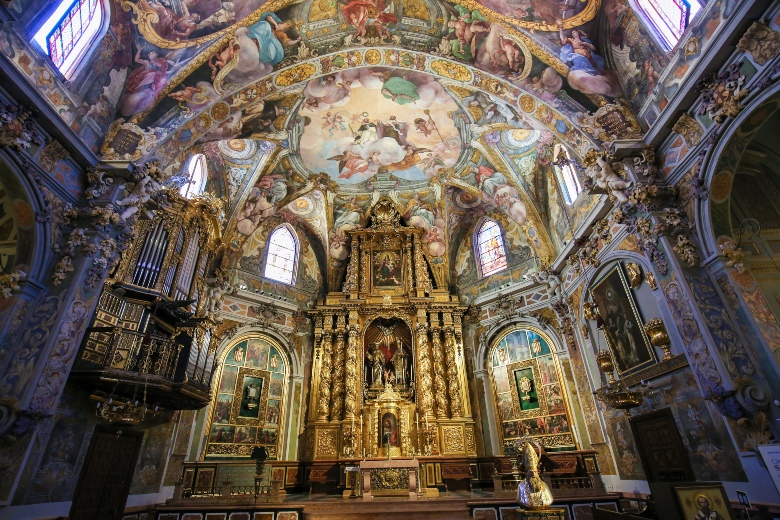
Saint Nicholas Church is often nicknamed the Sistine Chapel of Valencia. It is amongst the first twelve Christian parish churches in the city of Valencia. The church is simply magnificent and it is definitely one of Valencia’s architectural treasures. It is also one of the most famous tourist attractions in Valencia. There is a mixture of architectural styles in the Church as the Romanesque church was first renovated in the Gothic style in the 15th century, and its interior was then finished in the 1690s in the Baroque style. Inside, you will find several fresco paintings of scenes of the life of San Nicolás de Bari.
Every Monday, you are able to make the “Walks of Saint Nicholas” at the Church of San Nicolás. The walks are devoted to Saint Jude Thaddeus, the patron saint of impossible causes.
La Lonja de la Seda
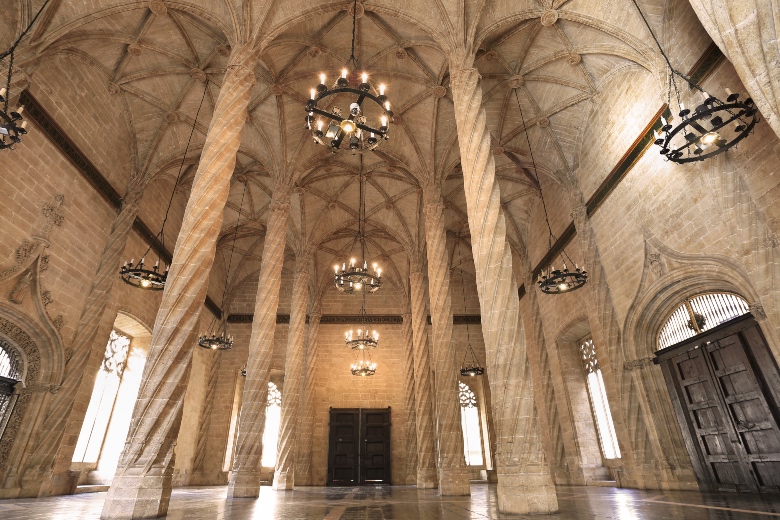
Valencia was a very important silk producer between the 14th and 18th centuries. La Lonja de la Seda was built in the 15th century to house the city’s Silk Exchange. Located in the centre of the city, it is where tradesmen and merchants met in exchange for silk. La Lonja is a fine example of Gothic civil architecture in Europe and highly resembles a medieval castle. Inside there is a vaulted ceiling and also dainty twisting columns; the attention to detail is incredible. Make a visit to La Lonja de la Seda to learn more about the historical legacy of the silk trade in Valencia.
You can also climb the 144 stone steps of the tower’s staircase to capture stunning views of the town.
City of the Arts and Sciences
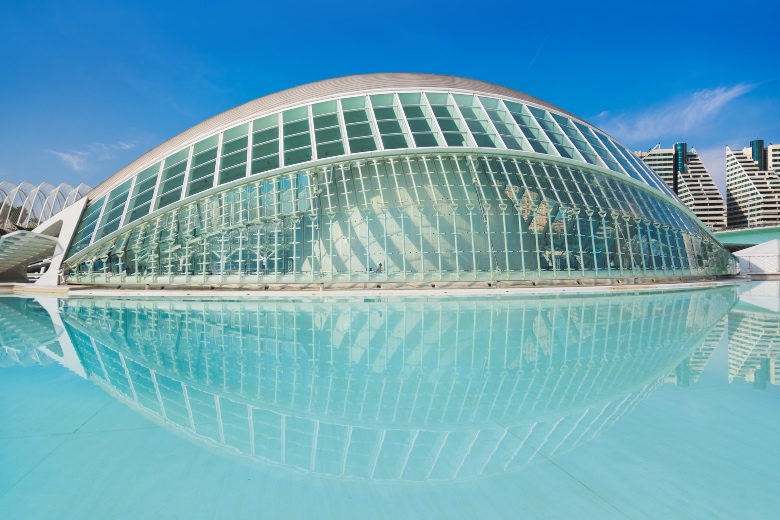
City of the Arts and Sciences was designed by architects Santiago Calatrava and Félix Candela. It is an ensemble of six areas which are made up of El Palau de les Arts Reina Sofía, L’Hemisfèric, L’Umbracle, El Museu de les Ciències Príncipe Felipe, Oceanografic and Ágora. There is a mixture of cultural venues, leisurely things like cinemas and aquariums and even a museum. The city of arts and sciences is a versatile space to explore and one that you can always go back to with the assurance that you will find something to do.
Tip: Make sure to check the opening hours for each thing in the “city” and book beforehand!
Try some Paella
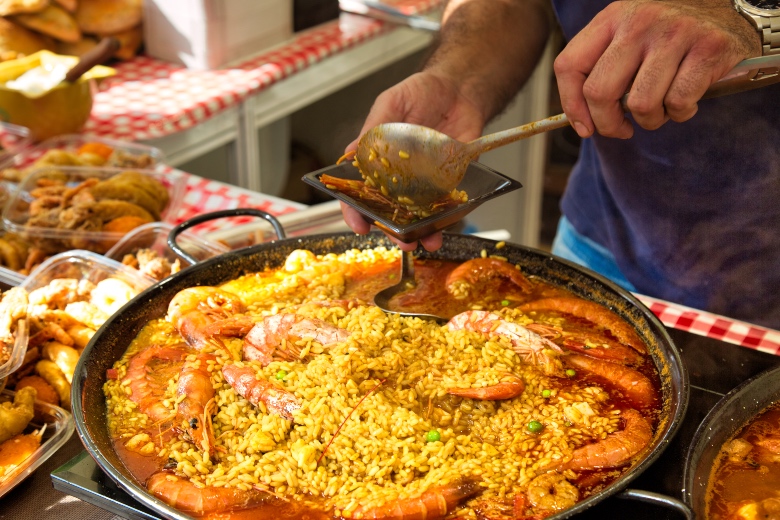
Paella is a must to try whilst you are in Valencia. The traditional Valencian dish is tasty and is the best-known Spanish dish in the world. The dish’s name comes from the large iron pans that it’s cooked and served in. The ingredients used in Paella are also home-grown, the rice is grown in vast fields north and south of the city. The flavours in the golden-coloured rice are unmatched, you can also choose from a variety of traditional meat to accompany your paella. You can go with rabbit and snails, or go for the seafood version, with prawns and squid. Casa Roberto, Casa Carmela and Restaurante Balandret are some of the places to try Paella.
El Miguelete Tower
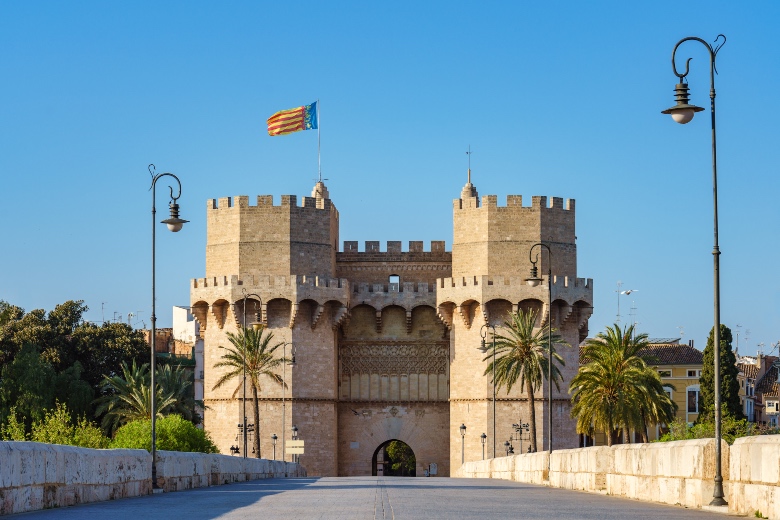
El Miguelete Tower is a part of Santa Maria Cathedral. Construction of the bell tower began in 1381 and was completed in 1736. It was never fully finished though as the top cover for the part containing the bells was never added. Valencia’s famous gothic tower stands at 51 meters, rising up over the rooftops. The octagonal-shaped tower can be accessed from inside the Cathedral by a spiral staircase. In total, there are 207 steps to climb.
Be sure to note that the bell tower is still in use today. The bell sounds on the hour and if you are ever up close, is extremely loud.
Las Fallas Festival
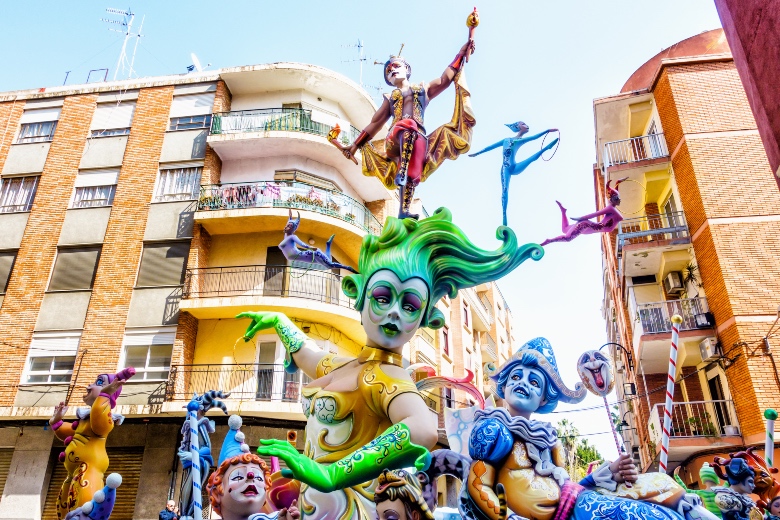
In March, the Las Fallas Festival takes place in Valencia. The religious festival takes place during the Fiesta de San José (Feast Day of Saint Joseph). The celebration is lively and is a famous local tradition. There is traditional music and food (paella),and also an array of fireworks. During the festival, there’s weeks of constant fireworks in the streets and in organized public displays. Each day at 2PM, people gather in the central square, Plaza del Ayuntamiento, for the daily mascleta. There are also a range of “fallas” at the festival. These large floats feature figures made of papier mâché. They are set up in the streets and then burned at midnight on the last day of the fiesta.
Las Fallas Festival is not one to be missed if you are in Valencia at this time!
OTHER GREAT THINGS TO DO
Oceanogràfic
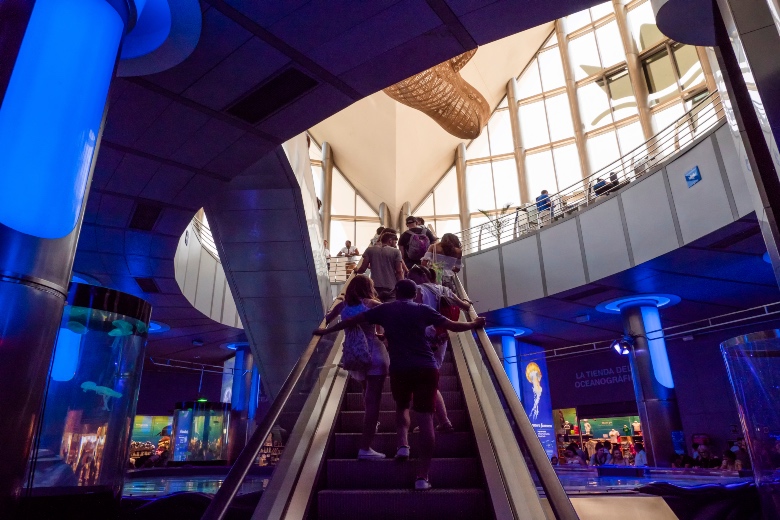
Oceanogràfic is one of the stars of the City of the Arts and Sciences. The aquarium is the largest in Europe, situated on the Turia River bed. It opened in 2003 and contains 45,000 individual animals from 500 different species. Stroll through the longest underwater tunnel and meet the only family of beluga whales on the continent. There is also another tunnel, where you are able to walk surrounded on both sides and overhead by swimming sharks – cool isn’t it! If you get hungry there is a Submarine Restaurant which serves food. It is a nice place to eat as it is encircled by giant aquariums. You can enjoy your food, whilst enjoying the view.
At the aquarium, you can also learn more about the conservation work that Oceanogràfic is currently doing.
Valencia Cathedral
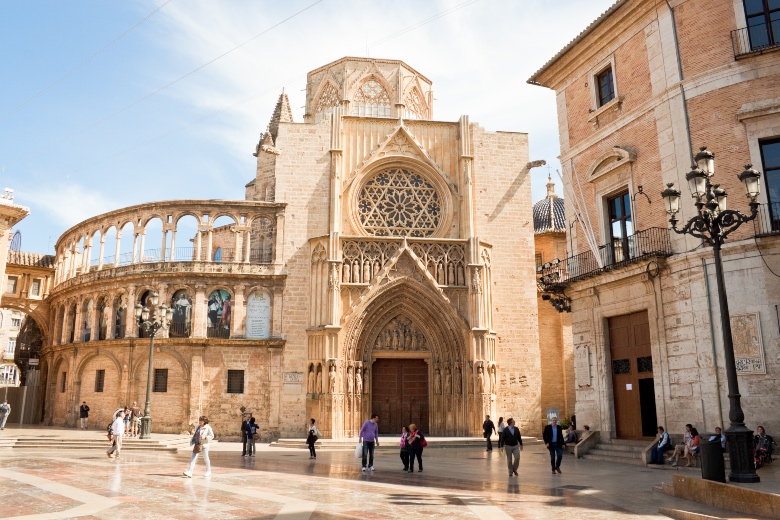
The Valencia Cathedral dates back to the 13th and 14th centuries. It particularly stands out as one of the most unusual cathedrals in Spain as it has a mixture of architectural styles. First it was the site of an ancient Roman temple and then a Moorish mosque, since then, there have been renaissance, baroque and neoclassical contributions made to it also. The ambience of the cathedral is illuminating. You will surely spend some time admiring the facade as it is very majestic.
At the cathedral, you have the chance to see The Holy Chalice of Valencia which is kept behind glass in the golden “Chapel of the Holy Grail”. It is one of a few chalices which have been claimed to have been used by Jesus to institute the Holy Eucharist at the last supper.
Note: El Miguelete tower is connected to the cathedral so don’t forget to climb up for some impeccable views!
Plaza de la Virgen
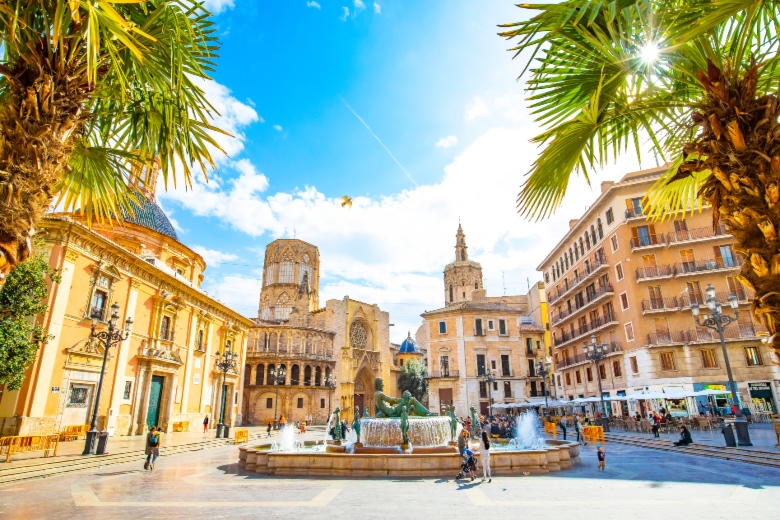
Plaza de la Virgen is one of Valencia’s many plaza’s, this one however overlooks the city’s cathedral. It can be found in the old quarter of Valencia and is surrounded by some of its most iconic buildings. The Neptune fountain at the center of the Plaza de la Virgen is simply stunning. When lighted at night, this plaza makes for an amazing photo op. The square is lively and always full of many people. It is a popular meeting spot for many tours in Valencia. There are also many bars and cafes where you can grab something to eat or drink, so why not try some new Tapas options?
Plaza de la Virgen is a pleasure to walk around and just admire.
Bioparc
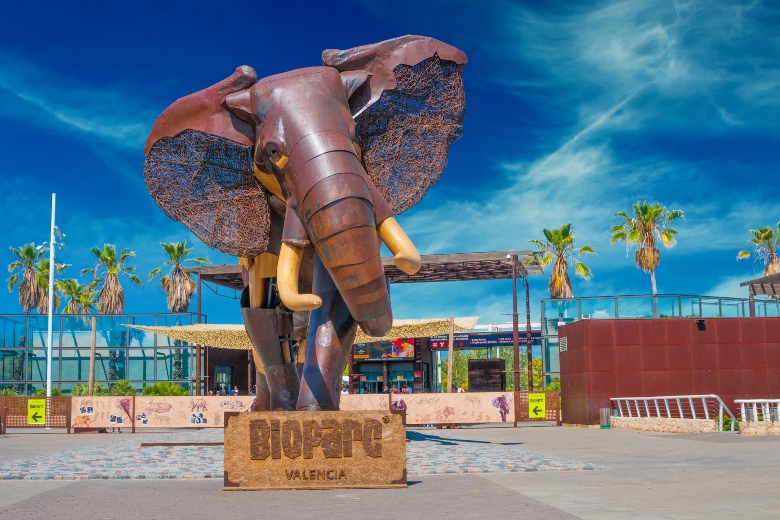
Bioparc is Valencia’s zoo, located in the Turia riverbed. It covers an area of 25 acres and houses close to a thousand animals of 150 different African species. The Bioparc is split into four main areas. The dry Savannah, the Wetlands, the recreated Baobab forest and The island of Madagascar. The environment is designed so that you immediately feel like you have been transported to Africa. You are able to stroll through the zoo and view the animals almost barrier-free in their landscapes. Animals such as rhinoceros, zebras, hyenas, gazelles, lemurs and lions can be found here. When around the lemurs, they often climb down the branches of the trees to greet you, which is quite a fun experience. Bioparc also has an amphitheatre, with a capacity of 1,000 people. It features displays of birds and marine mammals.
Bioparc is undoubtedly committed to sustainability of resources. In the zoo, solar panels are used to heat water, recycling more than 95 percent of it.
Serranos Towers

Torres de Serranos is an impressive landmark in Valencia. The towers were constructed at the end of the 14th century by Pere Balaguer as part of the city’s fortification. Between 1586 and 1888, they were used as a prison for the nobility. The towers have a height of 33-metres and resemble a triumphal arch. They are an excellent example of gothic architecture in Valencia and are one of the best preserved monuments of Valencia. Inside the towers, there are various rooms, and visitors can also climb to the top for some breathtaking views of Valencia.
Tip: There are quite a few steps to get to the top, so wear some comfortable shoes!
Palacio del Marqués de Dos Aguas
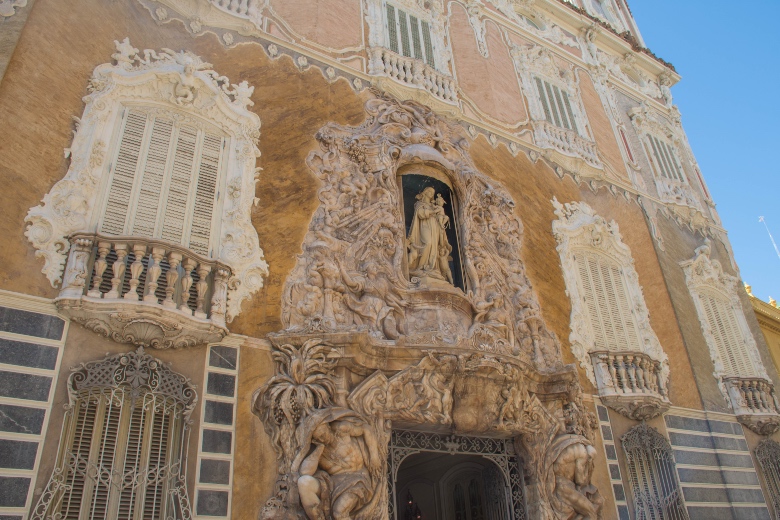
Palacio del Marqués de Dos Aguas is Valencia’s ceramics museum. The 18th-century aristocratic palace once belonged to a prominent noble family, and it is an architectural beauty. It is now officially known as the González Martí National Museum of Ceramics. Opened in 1947, the museum includes more than 5,000 examples of traditional pottery from Valencia and the surrounding areas. It is also dedicated to other decorative arts such as pieces of furniture, clothing, and paintings. Pieces by Picasso are included. The collection is also inclusive of prehistoric, Roman, Greek and Arab items.
L’Iber
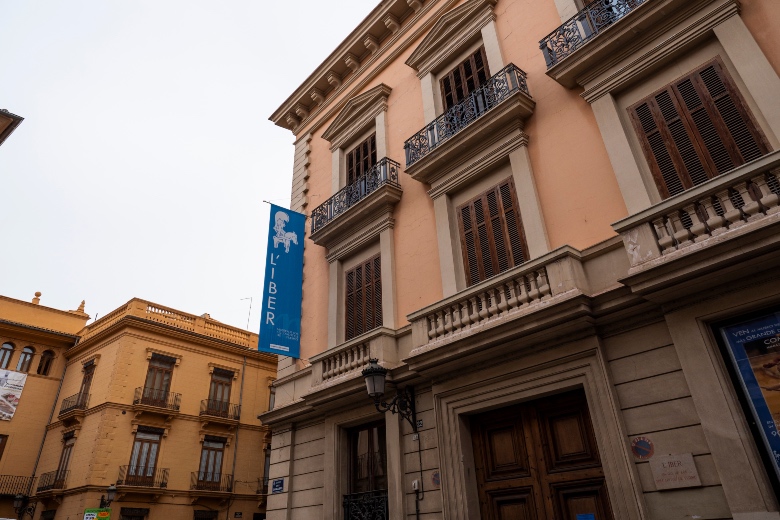
L’Iber is the world’s largest miniature toy soldiers museum. It features a massive collection of historical miniatures. Located in the Palacio de Malferit, there are more than 95,000 miniature pieces on display. The collection ranges from different eras around the world. From the dinosaurs to the Blue Helmets, passing through Egypt, Rome, the Silk Route and the history of Spain. At first you may find the museum quite strange, but at second glance, the collection is breathtaking. Immerse yourself in the stories told by the incredible miniature figures.
There are more than 15 rooms to explore here at L’Iber and is a fun place to discover with the kids.
Centro Histórico
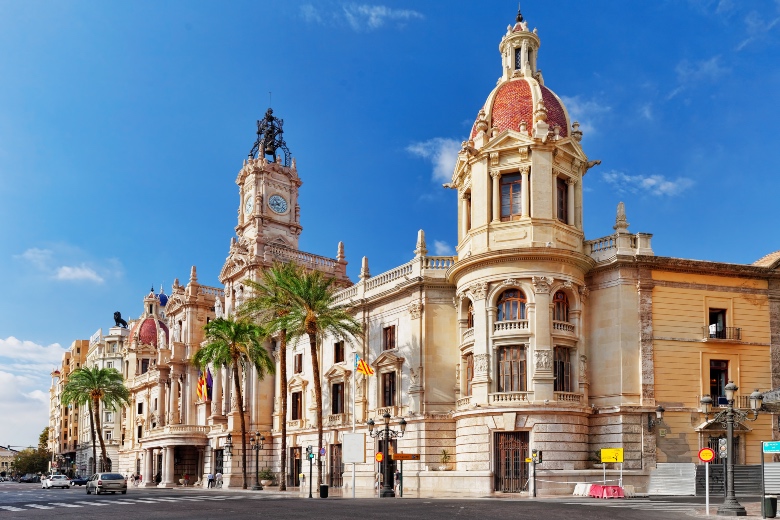
The historic centre of Valencia is named Centro Histórico. Stroll around the streets of the historic centre, which lie at the very heart of Valencia and discover more of its rich artistic heritage. At every corner, there is something amazing to see. Whether you want to stop for some top-quality fresh food and vegetables at mercado central or see Basílica de la Vírgen de los Desamparados or even explore Church of San Nicolás, you will not run out of things to do whilst you’re at Casco Histórico.
There is over 2,000 years of history to explore so why not start here at Centro Histórico?
Valencia’s Beaches
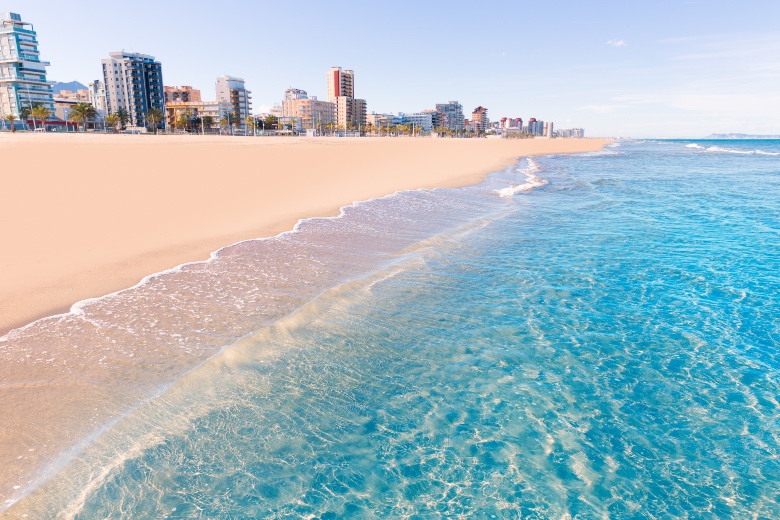
A beach day in Valencia is a necessity! The sands are fine and the waters refreshingly cool. The beaches in Valencia are incredibly beautiful and boast of unspoilt seaside paradise. Relax in the sun as it shines 314 days in the year. Unwind with a cocktail in your hand, and a fresh row of tapas to choose from. Some beaches do get busier than others so make sure to be prepared for crowds.
Las Arenas, La Malvarrosa and La Patacona are beaches all very close to the old town, so are not too far to get to. Playa del Saler is another popular beach in the Valencia region.
Jardín del Turia
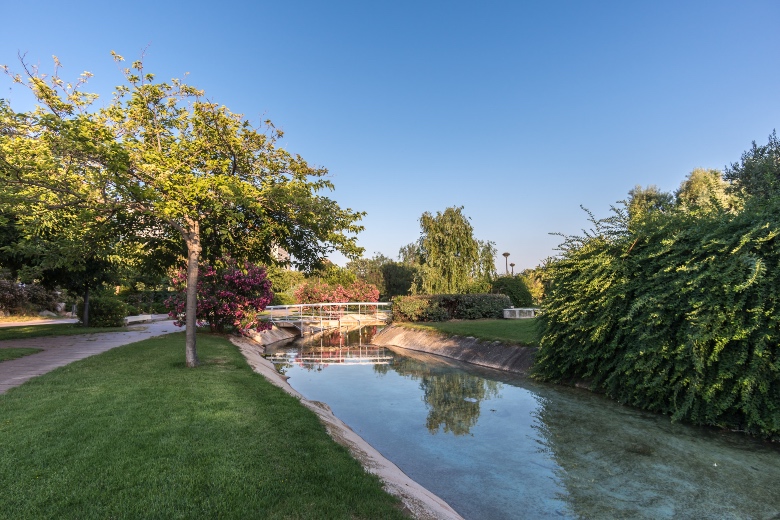
Jardín del Turia is a relaxing park in Valencia. It is one of the largest urban parks in Spain, seeing almost seven million visitors every year. The park makes up nine kilometres of green space, and stretches the length of Río Turia’s former course. It is a great place to take part in leisure activities, cycle, or just unwind in the midst of nature. Inside the park there are sports pitches and kids’ playing parks, so it could be a fun place for all of the family to go. Jardín del Turia is stunning with unique palm trees, orange trees, rose beds and fountains.
This park is certainly an obligated visit if you are looking for things to do in Valencia.
Pope Luna’s Castle
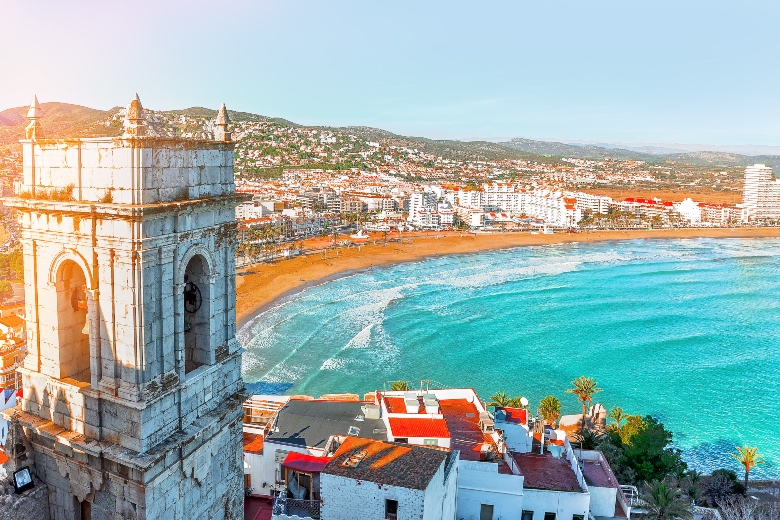
A visit to Pope Luna’s castle is a perfect way to discover a piece of the Templars’ history. The Templar were known to lead an austere life, with a vow of poverty, chastity and obedience. Their time was divided between prayer and war. The castle is also called Peñiscola Castle (as it is found in the medieval town of Peñiscola), and was built between 1294 and 1307. The castle was built by the Knights Templar and stands highest at about 64 metres above sea level. It is visited by about 225,000 visitors each year, making it one of Valenicia’s main attractions. Make sure to tread carefully on the cobbled streets leading up to the castle, as they are quite steep. Whilst you are here tour the walls of the castle and discover all the charms the beautiful village of Peñiscola has to offer.
If you do make it to the top, you will uncover that the panoramic view at the top of Pope Luna’s castle is unmatched.


